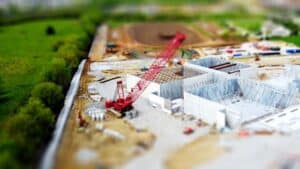On the one hand, a recent survey found that 91% of sales reps missed their quota. On the other hand, top-performing salespeople meet 125% (or more) of the quota.
How are they doing that? Is it just because they’re that good? The answer is likely because they have a robust sales pipeline system that supports them in handling their daily sales tasks.
Today, we’re going to look at what a sales pipeline is and how superstar salespeople use sales pipeline to close bigger, faster deals.
What Is a Sales Pipeline?
Sales pipeline refers to the record-keeping system sales teams use to track deals, prospects, and the actions salespeople take on each account.
That said, the term ‘sales pipeline’ is used synonymously with other terms. Many people, salespeople, sales managers, stakeholders, etc., use the following words when they talk about a ‘sales pipeline.’
- Sales forecast: An estimate of the number of deals you expect to close in a given month, quarter, year, etc. This forecast is typically about financial projections; it’s a way to make educated guesses about the revenue you expect to bring in.
Related: Learn how to generate accurate sales forecasts in this guide. - Sales funnel: This is a visual representation of the buyer’s journey from beginning to end; your funnel visualizes the number of people you have lost or expect to lose at each phase of the sales process.
- Sales process: A series of repeatable steps you follow to move a prospect from an interested buyer to a satisfied, repeat customer.
- Sales pipeline: A record that tracks (a.) the number of deals in progress, (b.) where each prospect is in the sales process, and (c.) the actions each salesperson has taken to progress/close the sale.
Related: When should you consider having multiple sales pipelines? These 5 multiple sales pipeline scenarios will tell you more.
How Top-Performing Sales Reps Use Sales Pipelines to Accelerate Deal Closings
1. Create a Steady Supply of Leads
If marketing isn’t generating enough, sales reps will need to know how to prospect to generate enough leads to meet their quota.
This means you’ll need a goal. Your sales manager will need to know what the annual goal is (e.g., 15% growth in revenue or $9.5 million in new sales) divided by the number of reps on your sales team (e.g., 200 sales reps). This should translate to daily and monthly activity for each of your sales reps.
$9.5M in Revenue (Goal) / 200 Sales Reps = $47,500 in Revenue (per Sales Rep)
$47,500 in Revenue / 12 mo. = $3,959 in revenue per mo. (per Sales Rep)
How many leads do you need each month to meet quota? To figure that out, you’ll need to know…
- Your conversion rate
- Minimum number of leads
- Average order value (per lead)
Next, you’ll need to do some basic math.
Let’s say our conversion rate is 5%, our average order value is $2,500. How many leads do we need?
47,500 in Revenue (per Sales Rep) / $2,500 Average Order Value = 19 Deals Closed (per Sales Rep, per yr.)
(19 * 100) / 5 = 380 Leads (per Sales Rep)
Well, if you’ve got 200 sales reps, you’re going to need 76,000 leads per yr.
Depending on your organizational structure, you may get that from marketing, sales, or a combination of marketing and sales. You’ll also need to maintain a consistent 5% conversion rate.
Improve your conversion rate, and the revenue you generate goes way up.
2. Use Disqualification Criteria to Evaluate Prospects
Disqualifying customers means you spend more of your time with the right customers – people who are willing and able to buy your products and services.
Here are some disqualification criteria that are shared company-wide. It’s a good idea to have the following in your database.
- Blacklisted customers (i.e., abusive or toxic customers)
- Problem customers (non-payment, collections, etc.)
- Customers who were fired
- Customers who have taken specific legal action against the company
- Predatory customers (e.g., knowledge vampires, tire kickers, etc.)
- Disqualified prospects (e.g., no budget, no need/desire)
You’ll also want to identify a list of potential deal-breakers, details that derail deals or extend sales cycles unreasonably. These could be any of the following:
- Misleading or inaccurate information
- Unprepared for a pitch (not doing your homework on a specific customer)
- Clueless about your company’s offerings (e.g., objections, risks, specifications, how-to, etc.)
- Clueless about your competitor’s offerings and how your offerings compare
- Repeated, unsolicited contact
- Poor listener, the customer can’t get a word in
- Ambiguous terms
- Neglects customers after the sale
- Slow to respond
- Takes a win/lose approach when negotiating terms
- Conflicts with price (e.g., unexpected price changes, inaccurate estimates, etc.)
If your sales team has a list of no-go scenarios and a list of people/companies who should be avoided, it’s easier to convince managers or marketing that a specific prospect belongs on your blacklist.
Don’t take my word for it, take a look at the research for yourself.
3. Leverage It to Earn Commitment
Disqualification criteria (see above) and a willingness to reject leads mean buyers lose the power they have over sales teams. If they want your help, they’ll need to negotiate with your sales reps in good faith.
What does this look like?
You require and give commitment; If your sales rep makes a concession for a prospect, that prospect must give you some sort of concession in return (e.g., if you agree to provide a discount, the buyer agrees to a long(er) term sales contract. If you give buyers incentives, customers agree to add more products or services to their order). This is how you earn commitment.
First, you earn your prospect’s respect, then you expect commitment as a requirement (to complete the deal). This is how you create deals that are win/win, profitable, and don’t erode margins.
4. Record Interaction with Prospects
Good documentation gives you the evidence and ammunition you need to make a convincing case to decision-makers, stakeholders, and other departments regarding the quality and effectiveness of your leads.
So what should be documented? In a few short words, you should keep an ongoing record of:
- Customer/prospect responses (or lack of responses) to sales rep engagement
- Customer/prospect data (e.g., budget, proposal requested, terms, decision-makers, influencers, etc.)
- Customer/prospect documentation
- Customer/prospect fit (e.g., Not a fit, Great fit, etc.)
- Customer/prospect risk factors (objections, fears, risks, concerns, etc.)
- Reasons the deal was won/lost
5. Use Data to Close Consistently
Top performers know they’ve done their homework. How does their sales pipeline factor into closing?
Top performers know:
- Who the decision-makers are
- Their customer’s budget
- What their customer’s desires, goals, fears, and frustrations are
- How to defuse customer objections and risks
- How to handle their customer’s fuzzy, implicit, unrealistic, and reasonable expectations
- How to create an irresistible offer
- The action steps they’ll need to take on a daily, monthly, or weekly basis to achieve quota
The best part about all of this? If your team relies on a CRM system, your manager also has a clear understanding of the actions each salesperson needs to take to close more deals.
This could be monitoring:
- Win/lose rates
- Conversion rates (tracking changes)
- Average order/deal values
- Number (and quality) of leads
- Number of quotes/proposals sent
- Number prospects lost (by deal stage)
- Sales rep engagement (i.e., how salespeople spend their time)
- Prospect engagement (i.e., how people respond)
- Revenue per salesperson
- Profit per salesperson
- Revenue leaks to fix (e.g., sending proposals to unqualified prospects)
- Products and services that produce the most/least profit
Why are these KPIs so important, though?
Consistently tracking these KPIs means you can (a.) identify your A-players and underperformers, (b.) determine which sales reps need to be retrained, supported, or let go, and (c.) identify the quality and performance of your lead sources over time. This improves performance.
Let’s say your sales team closes more deals via leads from Google Ads vs. video advertising on YouTube or ads on popular podcasts. How will this affect sales rep confidence and productivity?
Research shows that data-driven sales teams can increase sales by as much as 23x. With the right data, your sales team will know who to close, when to close, and how to close.
The more data you have in your sales pipeline, the more likely you are to increase your sales revenue.
Boost Sales Performance With Customizable Sales Pipeline CRM
Top-performing salespeople use their sales pipeline to boost productivity and performance. Their sales pipeline isn’t simply a series of steps, it’s an essential part of their day-to-day sales process. Apply these concepts consistently and you’ll find your sales team and your sales pipeline work hand-in-hand.
If you’re looking for a robust CRM with customizable sales pipeline management, check out Pipeline CRM. We’ve helped many companies improve their sales pipeline performance, including boosting the sales result by 30% for this manufacturing company.
Sign up now to start your 14-day free trial.





